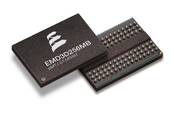This article is more than 1 year old
We just wanna torque: Spinning transfer boffins say torque memory near
'Precession' to make STT-MRAM better SRAM, DRAM, NAND and NOR replacement
California-based Spin Transfer Technologies has claimed recent results of its "precessional spin current technology" – three years in the making – will make it easier to write data to spin transfer torque magnetic memory (STT-MRAM) and for that data to be retained more than 10,000 times longer.
STT claimed "the results confirm" that it could increase the spin-torque efficiency of any MRAM device by 40-70 per cent and – crucially – that it can be added to existing MRAM fab processes.
STT-RAM (PDF) is a byte-addressable and nonvolatile memory with SRAM (Static RAM) and DRAM speed and the ability – its proponents claim – to be implemented in 7nm and 5nm processes that are smaller than DRAM and SRAM technology can manage, meaning greater density in less space.
Developers – including Everspin, Crocus and of course, STT – claim that STT-RAM can replace SRAM and DRAM, and even NAND and NOR flash in battery-driven devices, partly because its write current need is lower than these technologies. That means, in theory at least, longer battery life for mobile devices. As STT-RAM can withstand high temperatures, STT-RAM's fans say it is suited to the automobile market as well.
STT-MRAM cells or storage elements have two ferromagnetic plates, electrodes, separated by non-magnetic material. One high-coercivity electrode has its magnetism pinned because it needs a larger magnet field or spin-polarised current to change its magnetic orientation compared to the other electrode.
This second, lower coercivity electrode is called a free layer and its north-south orientation can be changed more easily. Binary values are stored by making the free electrode have the same, parallel, north-south orientation as the reference electrode or a different, anti-parallel one. The electrical resistance of the cell, due to the spin-polarised electron tunnelling effect, is different in each state, indicating a binary value.
Precessional Spin Current (PSC) technology can be used to make MRAM cell switching faster, achieved with lower currents, and last longer, said the Californian tech firm. STT has a patent in this area. Precession refers to changing the orientation of the axis of rotation of a body, such as a spinning top or, in this case, electrons.
In August last year GlobalFoundries, Samsung, TSMC and UMC said they intended to start making STT-MRAM chips as an alternative to NOR flash. GlobalFoundries is partnered with STT competitor Everspin.
STT claims its PCS technology can be added to all existing MRAM production processes, claiming with virtually no complexity or cost. STT will be hoping this means that STT-MRAM can get popular faster. ®

